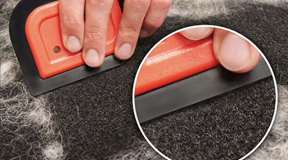People argue that a saltwater pool is more natural and chemical free. Not really! A brief entry in Wikipedia explains it well. When you install an inground swimming pool, the last thing on your mind is the possibility that you will have to get rid of it one day but of course you need to know the pool removal cost Sydney.
“Salt water chlorination is a process that uses dissolved salt (1,800-6,000 ppm) as a store for the chlorination system. The chlorinator uses electrolysis to break down the salt (NaCl). The resulting chemical reaction eventually produces hypochlorous acid (HCIO), and sodium hypochlorite (NaClO), which are the sanitizing agents already commonly used in swimming pools. As such, a saltwater pool is not actually chlorine-free; it simply utilizes a chlorine generator instead of direct addition of chlorine.”
Chlorine is the most common sanitizing agent used for both drinking and pool water. It goes a long way towards controlling the growth of algae and bacteria.
The common chlorine pool will have the occasional liquid chlorine shock and stability maintained with chlorine tablets. I am using Trichloro-S-Triazinetrione pucks, which slowly dissolve in water as they are carried around the pool in my Solar-Breeze.
A saltwater pool starts with Sodium Chloride – common table salt. The salt generator unbundles this crystal and produces Hypochlorous Acid and Sodium HypoChlorite.
All the same chemicals: H – Hydrogen, O – Oxygen, Na – Sodium and Cl – Chlorine are used but they are introduced to the pool in different forms. They both end up producing Hypochlorous Acid (Chlorine) to achieve the same result – Clean Water.
The water will feel and smell differently. More on that to come…
A solar robotic pool cleaner works in both salt and chlorine pools. The sooner the debris is removed from the water, the less decomposition there will be to combat. Less chemical intervention will be required and the filtration system or salt/chlorine generator can be run for fewer hours per day saving electricity and money.
Salt is essential to life. Without salt in your diet, many of the chemical processes of digestion and nutrient absorption are compromised.
What about salt outside the body – not consumed? Sea Salt is touted to have all sorts of benefits. Bathing in Sea Salts will help to detoxify your body, calm inflammatory skin conditions, slough off dead cells and generally leave your skin feeling more vital.
Purveyors of Dead Sea Salt bath salts make even more specific claims about its health and beauty benefits. The key here is that Sea Salts contain many other minerals in addition to Sodium Chloride. The list includes, but is not limited to: Magnesium Chloride, Potassium Chloride, Sulfur, Sodium Chloride, Bromide, Zinc and good old-fashioned Calcium. Each of these minerals plays a different role in your human biology.
Does swimming in a saltwater pool have the same health and beauty benefits as bathing with Sea Salts? The answer is all in the numbers.
Dead Sea salts are approximately 10% Sodium Chloride and 90% other minerals. Regular sea salts are approximately 90% Sodium Chloride with smaller concentrations of other minerals. Sodium is responsible for the taste that we identify as Salt.
A salt-water pool uses a chlorine generator to take crystalline salts and break them into Hypochlorous Acid and Sodium Hypochlorite. The Hypochlorous Acid is the Chlorine that sanitizes the pool water and impedes the growth of algae and bacteria. The two chemicals convert back into salt and then are broken out again as they go through the electrolysis of the chlorine generator. While they are recombined, we feel the salt (NaCl) in the pool.
Ocean water has a salt concentration of approximately 35,000 to 40,000 parts per million. We can taste salt at about 3,500 to 5,000 ppm depending on how old you are, so we identify ocean water as “very salty”. Water with Sodium at 3,500 ppm doesn’t overwhelm us as being salty. Instead, it just feels soft. When we get out of the ocean, we need to rinse off the crusty minerals to feel clean. This isn’t the case with a salt-water pool. Our skin just feels smooth and calm (non-allergic).
In a traditional (non-salt) pool, Hypochlorous Acid is still the sanitizing agent. There just isn’t as much salt. This gives a different feel, taste and smell to the water. I say “taste” not because you are going to drink your pool water, but because smells trigger receptors on your taste buds. Swimmers with allergic skin conditions will likely feel more comfortable with the higher concentration of Sodium and other mineral salts.
Does it harm your salt-water pool to add the occasional chlorine tablet? The answer is: not at all since Hypochlorous acid is the active sanitizing agent in both types of systems.
Adding salt is not the only way to make your pool water soft. Soft water is defined by the absence of minerals such as calcium and iron. The water in a chlorine pool can be softened by running it through a reverse osmosis process to remove dissolved minerals. This results in soft clean fresh water.
At the end of the day, you need to decide if your vision of a luxurious swimming pool was born in a salt water lagoon or a spring-fed fresh water pool.
Karen Rogers Sim writes for Solar Pool Technologies Inc., maker of the Solar-Breeze robotic pool skimmer. The company’s mission is to introduce products which will make it possible to remove swimming pools from the electrical grid. 8 million pools in North America consume an amazing amount of electricity. For more information, go to http://www.solar-breeze.com/ The company is located in Phoenix, Arizona 623-582-2825




